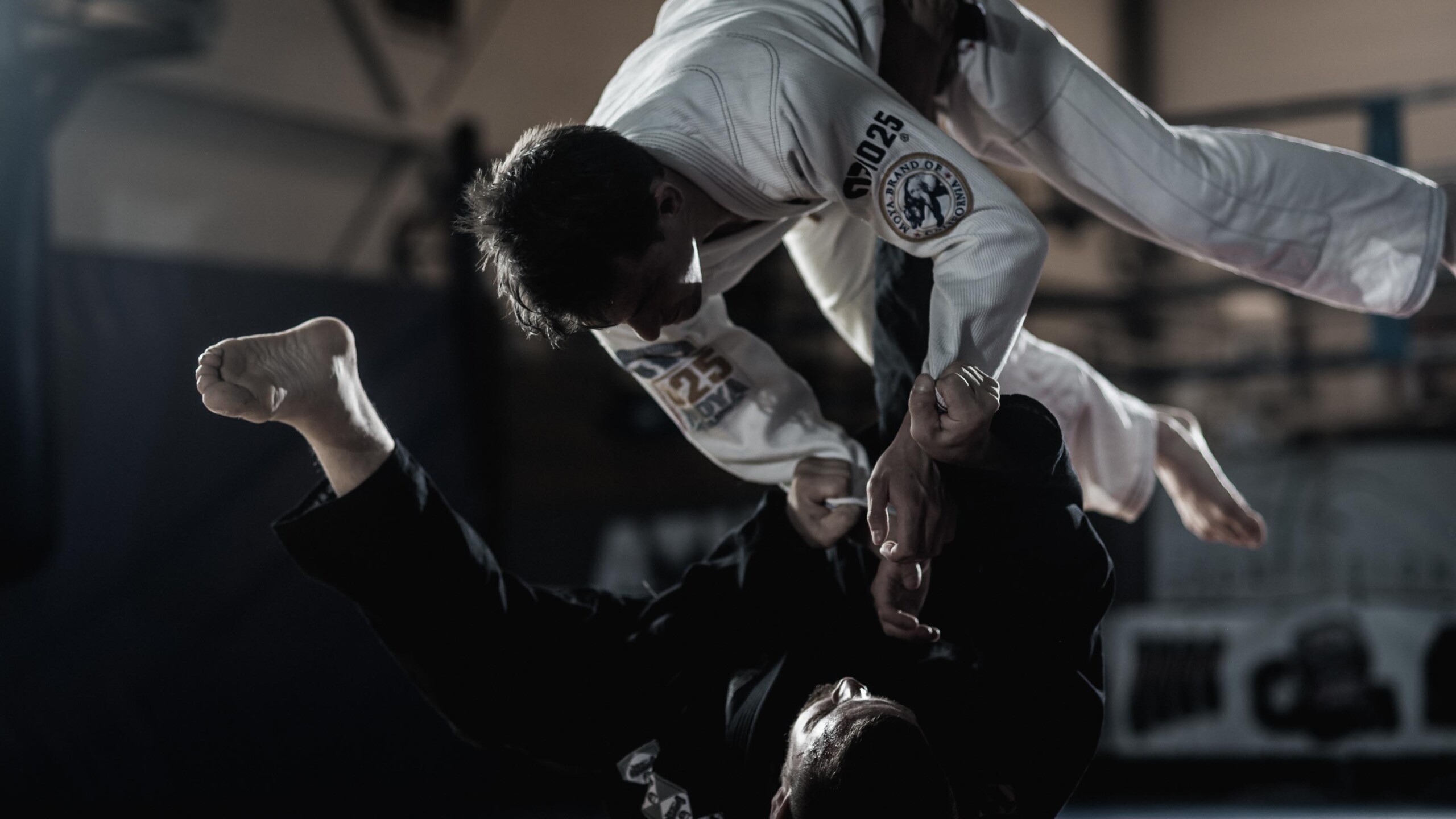About BJJ Adult Classes
Brazilian Jiu-Jitsu (BJJ) in the gi introduces you to a dynamic martial art that revolves around technique, leverage, and strategy. The “gi” refers to the traditional uniform worn during practice, consisting of a jacket and pants, similar to a kimono.
In BJJ with the gi, practitioners learn how to use the gi to their advantage, using its fabric to control, submit, and maneuver their opponents. Grips on the gi are essential for executing various techniques, including throws, joint locks, chokes, and controlling positions on the ground.
Training in the gi involves learning a diverse range of techniques and movements, emphasizing precision and leverage over brute strength. It’s a martial art that allows individuals of different sizes and strengths to compete on an equal footing, focusing on technique, timing, and mental agility.
BJJ in the gi provides a full-body workout while enhancing flexibility, endurance, and mental acuity. It’s not just about physical prowess but also about problem-solving on the mat and understanding the mechanics of body movement to outmaneuver opponents.
Ultimately, practicing BJJ in the gi is an engaging and rewarding journey that promotes personal growth, self-discipline, and camaraderie within a supportive community of fellow practitioners. Whether you’re a beginner or have prior martial arts experience, training in the gi offers a rich and fulfilling experience both on and off the mat.
Our Adult Brazilian Jiu-Jitsu (BJJ) classes are specialized martial arts classes designed for individuals who are 18 years and older. Brazilian Jiu-Jitsu is a grappling-based martial art that focuses on ground fighting and submission techniques. These classes typically have the following features:
- Skill Levels: Adult BJJ classes often cater to a wide range of skill levels, from complete beginners to advanced practitioners. They may have separate classes for beginners, intermediate, and advanced students.
- Instructor-led: A qualified BJJ instructor leads the class. In many cases, these instructors hold high-ranking belts (brown or black belts) and have extensive experience in the art.
- Warm-Up and Conditioning: Classes usually begin with a warm-up session to prepare the body for the physical demands of BJJ. This may include stretching, calisthenics, and aerobic exercises.
- Technique Instruction: A significant portion of the class is dedicated to teaching specific BJJ techniques. These techniques can include sweeps, escapes, submissions, and positional control. Instructors break down these techniques step by step, ensuring that students understand the mechanics and details.
- Drilling: Students often pair up to practice the techniques they’ve learned. This includes controlled sparring or “rolling,” where they apply the techniques against resisting opponents. Safety is a priority during drilling, and students are encouraged to tap out when they’re in uncomfortable or potentially dangerous situations.
- Live Sparring (Rolling): Towards the end of the class, students engage in live sparring sessions. This is where they put their skills to the test in a controlled environment. The intensity of these sessions can vary, and students often rotate partners.
- Gi and No-Gi Training: We offer classes in both gi (traditional BJJ uniform) and no-gi (without the uniform) formats, allowing students to explore different aspects of the art.
- Fitness and Conditioning: Many of our BJJ classes incorporate conditioning drills to improve strength, endurance, and flexibility, which are essential for effective performance in BJJ.
- Safety and Respect: Safety is a top priority in BJJ classes, and students are taught to apply techniques in a controlled and respectful manner. Etiquette and sportsmanship are emphasized.
- Community and Camaraderie: BJJ classes often foster a sense of community and camaraderie among participants. There’s a strong emphasis on mutual support and respect within the BJJ community.
- Competition Preparation: For those interested in competing in BJJ tournaments, some classes may offer specialized training to prepare students for competitive events. We also offer structured classes for these type of goals, as well.
- Progression and Belt Promotions: BJJ has a belt system to signify a student’s skill level and progression. Advancement through these belts is typically a significant goal for many practitioners, and instructors may provide guidance and assessments to help students work toward the next belt.
Overall, adult BJJ classes offer a comprehensive and engaging learning experience for those interested in Brazilian Jiu-Jitsu, whether for self-defense, fitness, or competition. They provide a structured environment to develop skills, build confidence, and connect with a like-minded community of practitioners.
Get A FREE Class
My husband goes to this gym and has had such a great experience. The professors are great and everyone is always so friendly, welcoming, and supportive. If you’re looking for a gym to begin your BJJ journey or to improve your skills, this is the perfect place to go.
Alejandra Pawlak


